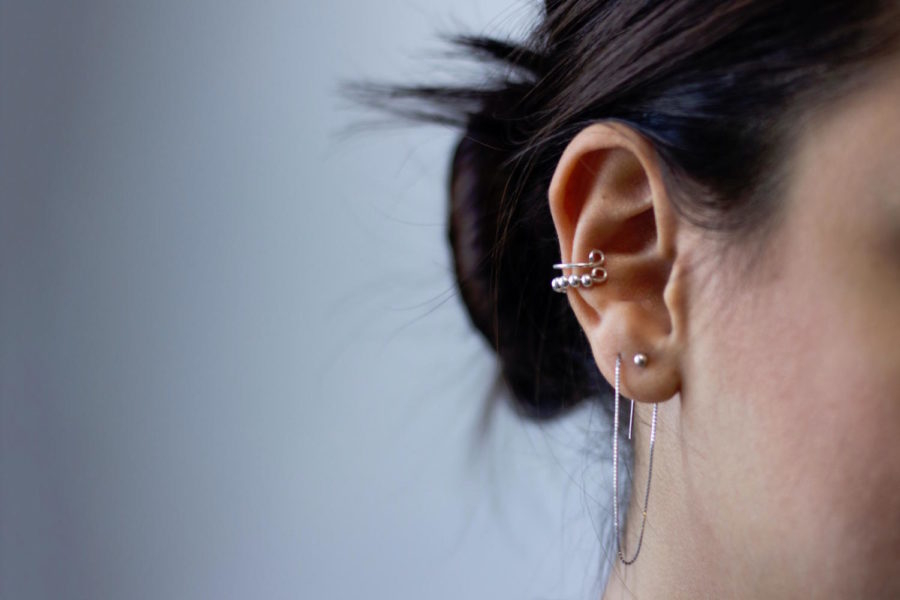Experts only: The dos and don’ts of piercings
Janessa McKissack shares her dos and don’ts of piercings.
April 20, 2022
There are precautions for both piercers and those pierced to prevent health complications in regard to body modifications.
Janessa McKissack, a professional piercer at MINT Piercing Studio in Ankeny, has been piercing clients for a decade. Over the years, she has developed an expertise on the subject and advises people on the dos and don’ts of piercing aftercare.
Mckissack recommends these tips based on her professional experience:
Do research before visiting a piercing studio.
Mckissack said that the Association of Professional Piercers is a good place to start when trying to find a reputable piercer. It’s a worldwide association that gives minimum standards for operation. The website offers a piercer locator map, with the closest recommended piercing studio to Ames being in Ankeny.
“Not all good studios are APP members for one reason or another,” Mckissack said.
Bottom line, Mckissack advises everyone to trust their gut and follow their instincts when it comes to finding a piercing studio that makes you feel safe and comfortable.
Don’t assume the bump on your piercing is a keloid.
“The number one issue that I see and am reached out to about are bumps on piercings,” Mckissack said.
More often than not when a person notices a bump on their piercing, they assume it is a keloid. Mckissack said that mainly has to do with the misinformation that is provided on the internet.
“Keloid scarring is a genetic condition where our scar tissue basically grows like a tumor, it grows out of control,” said Mckissack.
Developing a keloid on a piercing is rare and only certain people are susceptible.
Mckissack said a bump on a piercing is usually a sign of irritation caused by improper care, the piercing being crooked or being slept on at night.
Do invest in quality jewelry for your piercing.
There are many times in your life when going the cheaper route is encouraged, but jewelry for your piercing is definitely worth the splurge.
Mckissack said high quality jewelry is a sign of a creditable piercer. If the quality of jewelry is lacking, then that points to an error of judgment on the piercer’s part.
Some examples of lower quality jewelry include externally threaded barbells and enamel coating. These should not go into a fresh piercing because it cannot be properly sterilized.
Don’t use hydrogen peroxide to clean your piercing.
Do not use alcohol, peroxide, iodine, tea tree oil, antibacterial soap, ear care solution or contact lens saline to clean your piercing.
Mckissack recommends using asterile saline wound wash to clean the area. At least once a day, gently flush the piercing with saline for a few seconds then dry thoroughly.
In the shower, let the water run over the piercing for a few minutes to soften up any dried debris.
Mckissack said it’s important to keep the area dry. She recommends using a hair dryer to get rid of any moisture from your cleaning routine.
Do expect initial redness, localized swelling and tenderness from a fresh piercing.
After getting a piercing you should expect some redness, tenderness and swelling around the piercing site. These symptoms are normal in the initial stages of healing, so do not panic and assume it is infected. Mckissack said she rarely sees infected piercings.
Signs of infection include extreme pain, swelling in areas surrounding the piercing site, excessive discharge and skin peeling around the piercing.
Don’t hesitate to reach out if you have concerns about your piercing.
“My best advice for people who are concerned about infection is don’t try to deal with it on your own,” Mckissack said.
If you are having issues with your piercing, reach out to your piercer. Mckissack said part of a piercer’s job is to aid clients during the healing process.
Thinking of getting a new piercing that is relatively easy to heal? According to McKissack, a septum piercing is one of the fastest piercings to heal.
Feeling confident in your piercing aftercare regimen? McKissack suggests getting an industrial or navel piercing for more of a challenging healing process.
Check out McKissack’s work on Instagram @mintpiercing and @janessa_mckissack.







